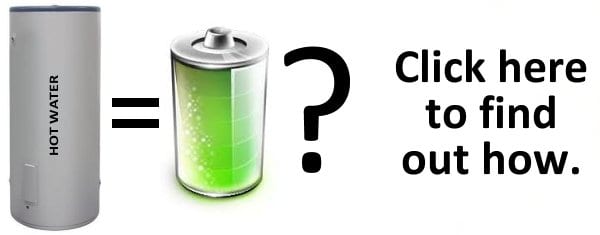Many people across Australia are already benefiting from solar panels on their roofs and one thing we are being asked by these people all the time is:
Can I add more solar panels to my solar power system?
And the answer to that question is it depends, maybe.
It would be nice if we could give a one size fits all answer, but whether you can add extra solar panels to your system or not depends on a number of different factors and is not quite as simple as just throwing a few panels on the roof. Lets have a look at the boxes that need to be ticked before we can give the green light to additional solar panels:
 1. Do you have you extra unshaded room on the roof for additional panels, facing the correct way?
1. Do you have you extra unshaded room on the roof for additional panels, facing the correct way?
2. How many solar panels do you have & what make and model are they?
3. What make & model of solar inverter do you have?
4. What feed in tariff are you on?
Without the first 3 questions being answered we cannot, and I repeat cannot tell you whether you can add additional solar panels or not. Lets look at how you can find the answers to these questions and what your findings will mean.
1. Do you have you extra unshaded room on the roof for additional panels, facing the correct way?
This one is pretty simple, and the answer is determined by the size of your solar power inverter and the amount of extra solar panels that you want to install. Generally on smaller inverters (2-3kW or below) any additional solar panels will have to go on a roof facing the same aspect as the existing solar panels, and it’s important that this roof is unshaded.
Most people aren’t aware of the fact that solar power systems usually have the solar panels wired in “series”, which means they are all connected in a daisy chain together. The problem with this method is that every solar panel connected in series will work at the voltage output of the lowest producing solar panel, so it’s very important that each solar panel connected in series is doing the same thing! Hence the important point of having all the solar panels facing the same way and in locations free of any shading. As I said this is a very “general” requirement, we will confirm the requirements with the information gathered from the next two questions.
2. How many solar panels do you have & what make and model are they?

Before we can confirm whether you can install additional solar panels it’s crucial that we know the details of your existing solar panels. The main things we are looking at here are as follows;
- Brand of solar panel
- Model of solar panel
- Power rating of solar panel (in Watts, i.e. 190W or 250W)
- Open circuit Voltage (Voc) of solar panel
- Short circuit Current (Isc) of solar panel
Depending on the documentation provided when the original solar panels were installed you may have the first 3 points on file for easy reference. Usually, if we have the first 3 points we can quickly work out the last 2 points. If you can’t find this data on file the solar panel information can usually be found on a data label underneath each solar panel. This isn’t the easiest place to access as it requires getting on the roof and underneath a solar panel – we find that taking a photo of the data label with a smartphone held underneath the panel is the easiest method.
The electrical characteristics of the existing solar panels are very important to ensure that we can specify additional solar panels that match the electrical characteristics of the existing ones. If solar panels with different electrical characteristics are added to your solar power system it can potentially make your solar power system perform worse than it did before!
3. What make and model solar inverter do you have?

How many additional solar panels you can add to your solar power system depends greatly on the solar power inverter you have installed. Solar panels can only be added to the inverter if adding the extra solar panels keeps the voltages and currents fed to the inverter within the operating window, or within working range of the inverter. To ensure that we provide you with the correct information in regards to how many solar panels you can add to the system we need to know the manufacturer and model number of the inverter. From this information, we will be able to see what the electrical characteristics of the inverter are and ensure that any additional solar panels meet the inverter’s criteria.
One thing that a lot of people don’t realize in regards to adding extra solar panels to their system is that the kW rating of your solar inverter doesn’t mean the kW rating of the solar panels is limited to the same. For example, a 2kW solar inverter doesn’t mean that you can’t have more than 2kW of solar panels, you can actually claim government rebates on solar panels up to 133% of the rating of the inverter. That means on a 2kW solar inverter you can claim government rebates on up to 2.66kW of solar panels installed. This is due to the fact that solar panels are rated at what’s called “Standard Test Conditions”, these are laboratory conditions, and the conditions found on your roof are rarely as good as the lab! Adding extra solar panels above the nameplate rating of the inverter will keep your system working closer to what it’s rated to work at for more of the time – this equates to more power production and savings for you!
4. What feed in tariff are you on?
The feed-in tariff that your solar power system is connected to is a factor to consider before adding additional solar panels. As every state has a different feed in tariffs and different requirements and stipulations it is a bit of a minefield. As it stands in South-East QLD and NSW the following are the options;
QLD 44c Feed in Tariff
If you’re connected to this feed in tariff it’s in your best interests to add as many solar panels to your system as your inverter will allow. The more solar panels you have the more power you will produce a surplus to your requirements, and you’ll receive the 44c per kWh feed in tariff rate for this extra surplus power. If you’re on this feed in tariff you can add as many solar panels as you like to your existing solar inverter but you cannot install a larger inverter: if you do you will lose the 44c feed in tariff. If you have a small solar inverter and you use heaps of power during the day then losing this feed in tariff may not be a concern; you could put in a larger inverter or an additional system to try and eliminate your daytime power consumption. You would lose the feed in tariff but you’re not benefiting from it anyway if you’re already consuming all the solar power you generate.
Make the most of the QLD 44c solar power net feed in tariff here
QLD Net Feed in Tariff (Other than the 44c FiT)
If you’re in QLD and on a feed in tariff other than the 44c net feed in tariff that’s no longer available then you can add whatever you like to your system within the limitations of your existing solar panels and inverter. If you want to replace your existing inverter with a larger unit or add an additional solar power system this will require prior approval from Energex before it can be installed.
Make the most of the QLD solar power net feed in tariff here
NSW Gross Feed in Tariff
If you’re on the NSW gross feed in tariff you can’t add any additional solar panels to your system; if you do you will lose the feed in tariff. With approval from Essential Energy, you can upgrade the inverter to a larger unit but you cannot add extra solar panels to this system. One thing you can do though is to install a completely separate, additional solar power system on a net feed in tariff. This would allow you to keep your gross feed in tariff in place, and you certainly don’t want to lose that!
NSW Net Feed in Tariff
On the NSW net feed in tariffs you can add solar panels and upgrade inverters as required with prior approval from Essential Energy.
Add More Solar Panels With The Solar Power Experts
At Gold Coast Solar Power Solutions we carry a large range of quality solar panels and solar inverters in stock that in most cases will work very well with your existing solar power system. By answering the questions above we can very quickly determine if you can add any extra solar panels to your existing system and provide you with a very competitive price to do so. Why not find out how much more you could be saving by adding additional solar panels to your solar power system?
Got A Question About Solar Power? Click Here For Answers!
- Does the temperature affect how much power solar panels make?
- Mono or Polycrystalline solar panels – does it matter?
- Solar Power Production on the Gold Coast – What can I expect?
- Solar Panel Efficiency – Does it matter?
- Solar Panels are different – Does it matter which solar panel?
- Solar Panel diodes – what are they and what do they do?
- 3 Phase Solar Inverters – Do you need one?


